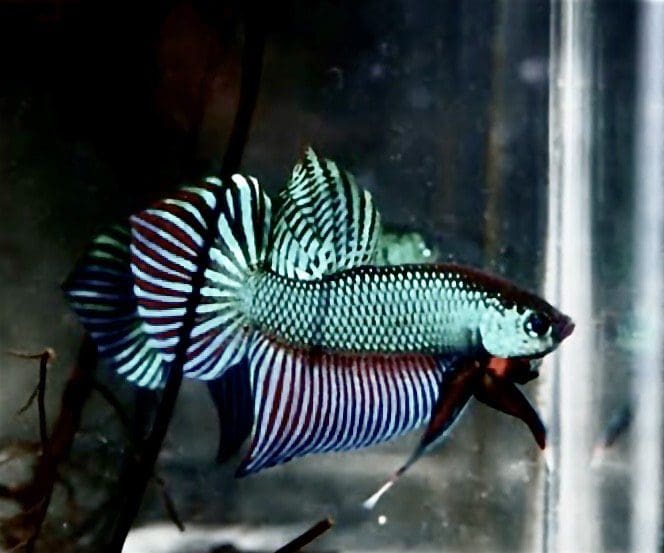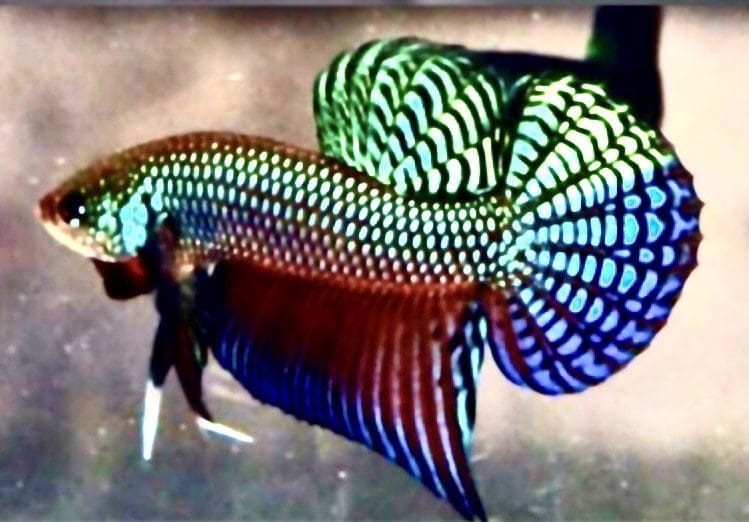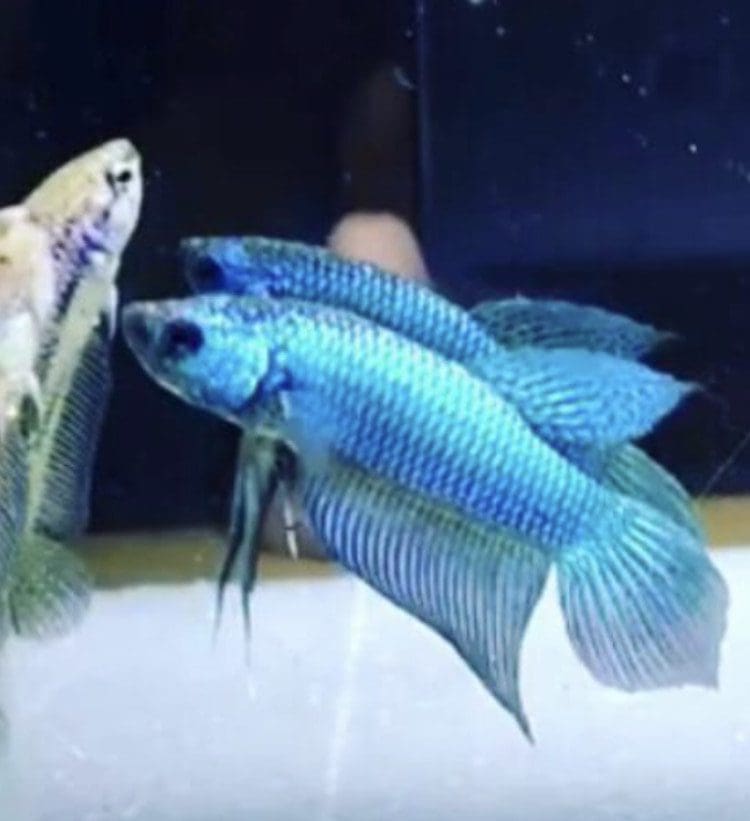Import/Export Betta smaragdina (Emerald Betta) from Thailand
Betta smaragdina, also known as the emerald betta or green betta, is a species of freshwater fish that belongs to the family Osphronemidae. It is native to Southeast Asia, specifically found in Thailand, Laos, and probably Vietnam.
As its name suggests, the emerald betta has a vibrant green coloration, with blue and red accents on its fins. Males typically have longer and more elaborate fins than females, and are more colorful overall. They can grow up to around 3 inches in length.
In the aquarium hobby, bettas are a popular species of fish known for their striking colors and flowing fins. However, it's important to provide them with a suitable environment, including a heated and filtered tank with plenty of hiding places and vegetation. Additionally, bettas are known to be territorial and aggressive towards other fish, so it's best to keep them in a tank by themselves or with other peaceful species.

Breeding Betta smaragdina, like other species of bettas, can be a rewarding but challenging endeavor. Here are some basic steps and considerations for breeding emerald bettas:
- Set up a breeding tank: Prepare a separate tank specifically for breeding, with a size of at least 10 gallons. The tank should have a heater to maintain a temperature between 78-82°F, a filter, and plenty of hiding places such as plants, caves, or breeding cones.
- Select healthy breeding pair: Choose a male and female emerald betta that are healthy, active, and have bright colors. It's best to choose fish that are not related to each other to avoid genetic issues.
- Condition the breeding pair: Before breeding, it's important to condition the breeding pair with a varied and protein-rich diet. Offer live or frozen foods such as bloodworms, brine shrimp, or daphnia. Increase the frequency and amount of feeding for a few weeks until the fish become plump and ready to breed.
- Introduce the breeding pair: Once the breeding pair is ready, introduce them to the breeding tank. The male will start building a bubble nest at the surface of the water, and will display courtship behaviors such as flaring his fins and gills to attract the female.
- Observe the breeding process: The male will embrace the female and release sperm and eggs simultaneously. The eggs will float to the surface and the male will collect them in his bubble nest. After several hours, remove the female to prevent her from eating the eggs.
- Incubate the eggs: The eggs will hatch within 24-48 hours, and the fry will remain in the bubble nest for another 2-3 days before becoming free-swimming. Provide the fry with infusoria or newly hatched brine shrimp for the first few days, and gradually introduce more advanced foods as they grow.
Breeding bettas can be challenging, and it's important to do proper research and preparation before attempting to breed them. It's also important to ensure that any breeding practices are ethical and sustainable, and not harmful to the fish or natural populations.

Buriram is a province in northeastern Thailand, which is within the native range of Betta smaragdina, also known as the emerald betta or green betta. It's possible that this species of fish is found in Buriram, as it's known to inhabit various parts of Thailand.
In the aquarium hobby, bettas are commonly bred and traded, and it's possible that emerald bettas from Buriram or other parts of Thailand are sought after by hobbyists due to their unique genetic traits or regional variations. However, it's important to ensure that any fish being traded are ethically and sustainably sourced, and not taken from the wild without proper permits or harming natural populations.

Bettas are carnivorous fish that require a varied and balanced diet to maintain good health and coloration. Here are some tips for feeding bettas:
- Offer a high-quality pellet ( http://www.feed4fish.com ) or flake food: Bettas can be fed a high-quality pellet or flake food that is specifically formulated for bettas or other carnivorous fish. Look for a food that contains a high percentage of protein and is fortified with vitamins and minerals.
- Supplement with live or frozen foods: Bettas also benefit from live or frozen foods such as bloodworms, brine shrimp, or daphnia. These foods are high in protein and provide essential nutrients that may not be found in dry foods.
- Feed in small amounts: Bettas have small stomachs and should be fed small amounts 2-3 times a day. Overfeeding can lead to digestive issues and obesity.
- Avoid feeding exclusively on one type of food: Variety is key to a healthy diet for bettas. Rotate between different types of dry and live/frozen foods to provide a balanced and varied diet.
- Consider feeding vegetables: Bettas may also benefit from some vegetable matter in their diet, such as blanched spinach or peas. These can help with digestion and provide additional nutrients.
- Remove uneaten food: Any uneaten food should be removed from the tank after a few minutes to prevent it from fouling the water.
It's important to provide a balanced and varied diet for bettas to ensure their good health and longevity. Remember to also consider the size of the betta's stomach and to not overfeed them.
All the varieties of Betta smargdina are constantly present in our availability. Do not hesitate to contact us for more information




